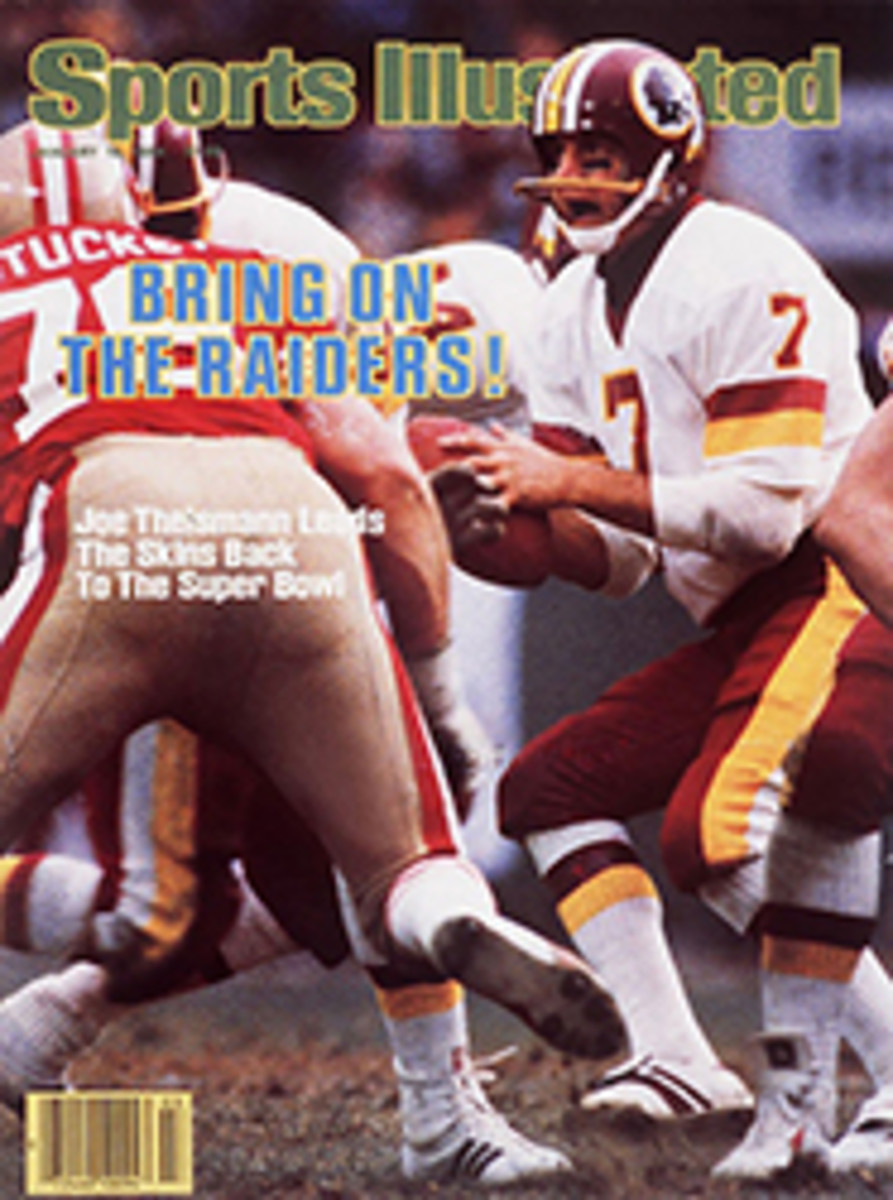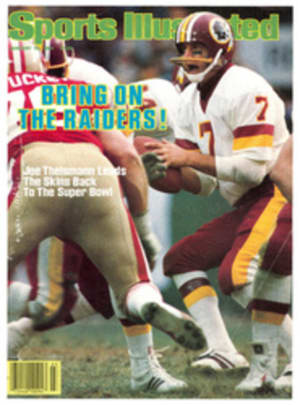
A new tune for the Jazz
The 1983-84 Utah Jazz has redefined the term "new look." Coach Frank Layden, who ended last season weighing 280, dropped 70 pounds over the summer. Then the Jazz, whose chances of winning games last season were pretty slim—they were 30-52—became heavy favorites for NBA Surprise Team of the Year honors.
After victories last week over the Houston Rockets and Kansas City Kings, Utah's Midwest Division-leading record was 22-12, third best in the league, behind only Boston and Philadelphia.
If that isn't radical enough—last season the Jazz didn't win its 22nd game until March 3—try this one on for size: If the NBA All-Star Game were held this week instead of on Jan. 29, guess who would be calling the shots for the West team? Not the Portland Trail Blazers' Jack Ramsay, or the Los Angeles Lakers' Pat Riley, or the Dallas Mavericks' Dick Motta. Layden would be the man.
"That would be quite a thrill," says Layden, who until recently had been more noted for his wit and width than his coaching ability. "It would screw up my weekend socially, but I guess that's O.K."
And Layden wouldn't be the only Utah representative among the All-Stars. After missing 60 games last season because of torn ligaments in his right wrist, forward Adrian Dantley has already locked up the NBA Comeback Player of the Year award while averaging a league-leading 30.8 points a game. In the 116-111 defeat of Houston last Wednesday in the Jazz' Las Vegas home away from home, Dantley sank 28 of 29 free-throw attempts to tie Wilt Chamberlain's 22-year-old mark, set in his 100-point game, for the most foul shots made in a regular-season game. Dantley wound up with 46 points, one shy of his season high. But the Jazz is no one-man band. Substitute forward John Drew, who sat out 37 games last season while undergoing drug rehabilitation, at week's end was averaging 20.3 points per game; high-flying guard Darrell Griffith was leading the league in three-point goals while averaging 18.6 points per game; point guard Rickey Green was atop the NBA in steals (2.97 a game) and was fifth in assists (9.6); and Mark Eaton, the 7'3½", 290-pound center, was the No. 1 NBA shot blocker, with a 4.15 average.
"Before the season, many people had serious doubts about our players. Now we've shown that we're a much better team than we were given credit for, and everyone's getting his just deserts," says Layden, who since his weight loss through starvation diet is largely partial to food for thought. "People finally have to seriously ask things like, 'Isn't Rickey Green one of the best point guards in the league?'"
Although the answer to Layden's question is yes, until this season it was hard to take anything about the Jazz seriously. Since the team's birth in New Orleans in 1974-75, the Jazz has never made the playoffs. Last year's 30 victories were the most since the franchise moved to Salt Lake City in 1979.
Much of the credit for Utah's surprising success belongs to Layden, who has swung the high-scoring Dantley between small forward and guard while continuing to give enough minutes to Griffith. Add Green's direction and Eaton's improved defense, rebounding and outlet passing, and Utah has a fast-break offense that at week's end was averaging 120.2 points a game, second only to the production of the Denver Nuggets.
Layden must now be looked upon as more than just a sought-after after-dinner speaker. "That was my image—the fun-and-games coach—and I worked hard at it," Layden says. "My role was to make people forget how bad what they were seeing out on the floor was."
Before this season, the Jazz had to resort to gimmicks to draw fans to the Salt Palace. Last year, for example, $30 got you a courtside VIP seat as well as a pair of ducats elsewhere in the arena, which seemed like a good idea until security officials espied the VIPs scalping their extra seats.
Even today, during Jazz games in the Salt Palace, there are VIP seats between the scorer's table and the benches, creating such a crush of humanity that at times there aren't enough seats on the Utah bench for all the players.
"Losing makes it easier to look for excuses or easy laughs," Layden says. "I enjoy the humor, but beneath all of that was a very serious plan. I haven't won in the pros, but I've always known that given the material, I could."
The material that the 52-year-old Layden, who was 119-97 as coach at Niagara from 1968-76, refers to is a supporting cast for Dantley and Griffith. In fact, until this season the book on the Jazz was: Let Dantley and Griffith get their points; no one else can hurt you. "We would win an awful lot of first quarters," Layden says, "but eventually I had to take A.D. or Darrell or both out of the game, and that would usually be it."
Even when Utah tried to build around its two stars it seemed to fall on its face. Long noted for trading away first-round draft choices for questionable talent, the Jazz seemingly did it again in 1982 by acquiring Drew from the Atlanta Hawks in return for the negotiating rights to Utah's No. 1 draft pick, Dominique Wilkins. When questioned about the wisdom of trading such a surefire star, Layden, who also serves as the Jazz' general manager, responded in typical fashion: "Dominique? It was supposed to have been Jeff [Wilkins, a backup center]."
Things weren't as funny 10 games into the season, when Drew left the Jazz to enter a Baltimore drug-rehabilitation program. By the time he returned in February, Dantley had been hurt and the season was lost.
Public reaction to Utah's 1983 No. 1 draft choice, forward Thurl Bailey from North Carolina State, was favorable; this time Layden came under preseason fire when he announced that Dantley would be used at the offguard position as well as at small forward. Among those skeptical of the move was Dantley, who had to contend not only with coming back from a serious injury, but also with learning a new position. "I'd played guard before in summer leagues, but doing it in NBA games is an entirely different type of pressure," Dantley says. "I was leery about making the switch; it seemed like I was thinking too much about what to do and how to do it, and meanwhile I'd fall a step behind everybody else. It still takes a lot out of me, and sometimes I don't feel productive at the guard spot, but so far it looks like a pretty good move."
Although Green jokingly says, "Getting the ball to all the guys enough to make them happy is one of the hardest things I've ever had to do," there's little discussion these days about the Jazz' needing three basketballs to satisfy Dantley, Griffith and Drew.
"No way," Dantley says. "I've never had problems adjusting to situations, and I don't shoot as much as some people think I do. I get a lot of my opportunities from the fast break or just cutting to the ball.
"I'm a scorer, and that makes a difference. If you're just a shooter, then you have to have the ball and take so many shots a game to get your points. Drew and I are scorers, so we're not like other teams where the coaches have to sit around worrying about how they're going to get so-and-so and so-and-so a certain amount of shots every game."
The Jazz is still winning the early quarters with Dantley and Griffith starting. Then Drew comes off the bench to replace Dantley at forward. After a time, Dantley spells Griffith at guard, where A.D. is capable of posting up smaller defenders. Dantley's total of 453 free-throw attempts—he'd made 392—through last week was 134 more then that of the runner-up in the league, Moses Malone.
Along with the Dantley experiment, the key to Utah's upturn has been the improved play of Eaton, who at one time was the tallest goalie in the history of the Westminster (Calif.) High water polo team. In high school, Eaton, then a mere 7-footer, preferred aquatics to hoops and after graduation actually gave up basketball for three years, going to a trade school and working in a tire store. It was there, in 1978, that Tom Lubin, an assistant coach at Cypress Junior College in Orange County, found Eaton and lured him back into the game.
After two years at Cypress and two more of near invisibility at UCLA, Eaton's thoughts upon entering the NBA last season were focused on "how I was going to survive." But in Layden's mind Eaton came into the league with one very large plus: size. "He's so big that the NBA will only allow us to carry 11 men," Layden says. "We have to count him twice."
Now, although Eaton is still more than a little mechanical in his play, he effectively clogs up the middle. And the other aspects of his play have developed to the point where after last week's win over Houston, he was asked by a group of reporters to hold court. "Perhaps I am getting somewhere," Eaton said to no one in particular. "Before, no one even asked me anything; now someone wants to talk to me about Ralph Sampson." And even about himself.
PHOTO
The witty Layden has swapped width for wins.
PHOTO
Dantley is having a ball at forward, and at guard.
PHOTO
Eaton, who leads the NBA in blocked shots, is still learning the ropes around the hoop.

